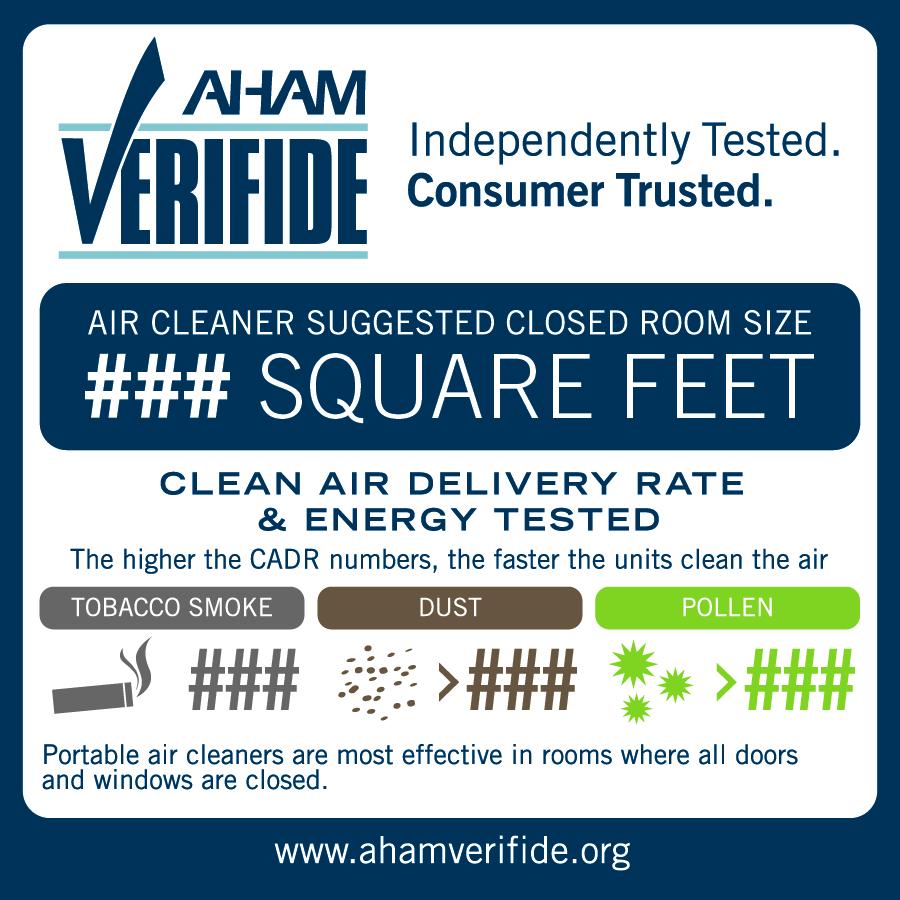In this post, our goal is to explain air purifier CADR meaning in a way that you will understand it and apply it. If you are in the market for an air purifier you most likely came across this abbreviation sooner or later. It is important to understand it before buying any air purifier, as it may drastically influence your buying decision. Here is what you need to know.
Simply put CADR (otherwise known as “Clean Air Delivery Rate”) is the amount of clean air that an air purifier can produce in a time interval of one minute. CADR basically measures efficiency of air purifiers, with a numerical value for the three most common indoor pollutants – smoke, pollen, and dust. The higher the CADR value, the better an air purifier is at cleaning the air. . We consider it to be very useful information, especially if you are deciding between two different air purifying units with same characteristics. In such cases, CADR can help pick the winner between the two, which is something that would be otherwise difficult.
In order to ensure the accuracy of measured data, CADR measurements are performed exclusively at the Association of Home Appliance Manufacturers or “AHAM” for short. We will not write much more about AHAM. All you need to know is that they maintain and develop technical standards and measure performances for various appliances. A fun fact – even EPA (Environmental Protection Agency) and American Lung Association use CADR.

AHAM verification badge. Source: ahamverifide
Understanding CADR measurement numbers
We measure it with cubic feet per minute (or CFM) of air which has been cleaned of all harmful particles (of a given size distribution). In other words, we measure how much cubic feet of clean air can the device produce in a minute. When AHAM measures CADR they use a standard measurement of 1,008 cubic feet, which is the size of a typical house room. This is important to keep in mind because not all air purifiers are covered this way.
Filter airflow and filter efficiency are the two factors that influence the CADR rating scale. To give an example – if an air purifier produces 90 cfm and removes 95% of pollutants (in other words it has a 95% effective rate) its CADR would be 85,5. We get this number by multiplying “cfm” with “% of effectiveness”. In this example, we had 90 (cfm) multiplied by 0.95 (95% effective) = 85,5 CADR.
So how do you use this information for something practical, like how effective is an air purifier? AHAM recommends a simple equation.
The equation goes like this: CADR rating x 1.55 = room size.
If we give an example: let’s say you found an air purifier with a CADR rating of 90. We take 90, multiply it with 1.55 and get 139,5. So based on AHAM recommendations, a device with 90 CADR would be effective at cleaning a room up to 139.5 square feet (standard 8 ft ceiling height).
But what if you have the room size and want to calculate the sufficient CADR? Luckily we can do mathematics both ways. In this case, you simply take your room size (in square feet) and divide by 1.55. If your room is 200 square feet, and you divide that by 1.55 you get 129. This means that you want an air purifier that has a CADR rating of at least 129 if you want effective room cleaning.
Air Purifier CADR meaning – some final tips and recommendations
At this point, you were hopefully able to get some understanding of air purifier CADR meaning. We tried not to go too much in-depth while still giving you enough practical information for future purchases. We did prepare some final tips that we think are important for you to know. These are:
- CADR ratings by AHAM is completely voluntary, despite being an industry standard. We estimate that only around half of US brands use it, so you might not find this information in every air purifier you look at.
- As we mentioned at the start, the rating scale consists of three parts – smoke, pollen, and dust. They vary in size, smoke being smallest.
- You should use this rating only for single room air purifiers. Whole-house air purifiers have a different kind of rating in place.
- The measurements are done on the highest fan speed only. This is relevant information for any air purifier that comes with fan speed settings. If you lower the fan speed, you can expect lower room coverage.
- Additional product features, such as UV-C light, ozone, and noise level do not have an impact on this rating.
- We suggest you use it mainly to determine the room size coverage of your room purifier. If possible, use the smoke CADR rating (remember there are 3 separate ones – smoke, pollen dust) as this one covers the smallest particles. Smallest particles are the ones that are most dangerous for your health.
- CADR rating excludes any gas or odor removal in the testing process.